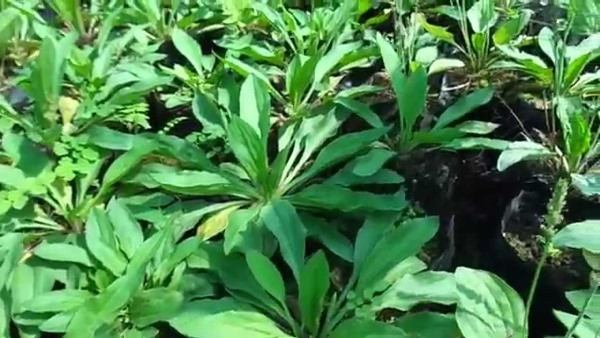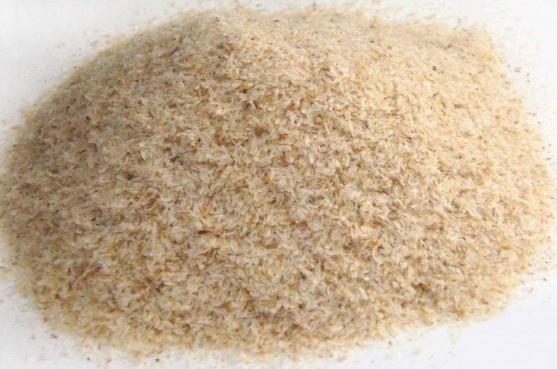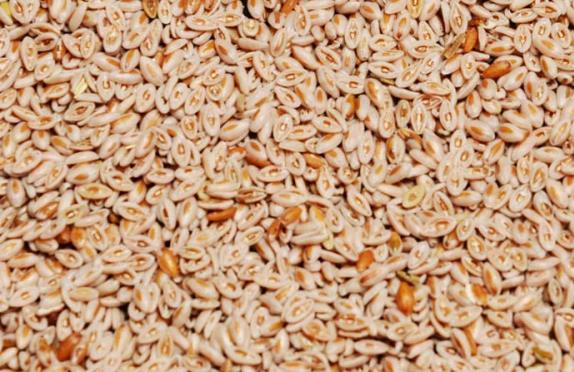Isabgol Cultivation Guide:

Introduction of Isabgol Cultivation:- Isabgol is also known as ispaghula or psyllium. Psyllium seed husks are portions of the seeds of the plant Isabgol (plantago ovata). Isabgol is a short-stemmed medicinal annual herb that grows up to a height of 35 to 40 cm. Isabgol (plantago ovate forsk) is mainly grown for its seeds. India is top producer of these seeds and Isabgol husk. Isabgol is commercially important Rabi season medicinal crop grown in India. Apart from its husk (The seed coat is known as “husk”) medicinal properties, it is also being used in food industry especially in ice creams, biscuits and candies. This crop is commercially cultivated mainly in the states of Rajasthan, Gujarat and Madhya Pradesh. Isabgol can be used in the form of Psyllium Husk, Seed, Ripe Seeds, and Powder. Isabgol is distributed in India, West Asia, Pakistan, Bangladesh, Persia, Mexico, and Mediterranean Regions.
Family Name of Isabgol:- Plantaginaceae.
Botanical/Scientific Name of Isabgol:- Plantago ovata.
Health Benefits / Medicinal Properties / Uses of Isabgol:- The following are the health benefits of Isabgol.

- Isabgol relieves constipation.
- Isabgol may control diarrhea.
- Isabgol improves digestion.
- Isabgol cleanse colon.
- Isabgol helps in weight loss management.
- Isabgol helps in relieving from acidity.
- Isabgol helps in curing piles & fissures.
- Isabgol lowers the risk of cardiovascular disease.
- Isabgol helps in lowering blood cholesterol.
- Isabgol helps in lowering blood Pressure.
- Isabgol helps control diabetes.
Caution: There are side effects of Isabgol as well. Please contact your doctor before using any of its products.
Common Names of Isabgol:- Ispaghula, Psyllium Seed, Indian Plantago, Spogel, Sand Plantain, Flea Seed, Plantago sp., Isabgula, Plantaginis Ovatae Semen and Semen Ispaghulae.
Local Names of Isabgol in India:- Ispaghula, Psyllium, Blond Psyllium, Spogel Seeds, Ripple Grass (English), Ashwagol, Ishadgola, Ashwakarna, Ashwakarnabeeja, Sheetabeeja, Ishrawarabola, Snigdhajeeraka (Sanskrit), Isabgol, Isabgul, Issufgul, Ispaghul, Isubgol (Hindi), Esphopgol, Isabgul, Isshopgul, Ispaghul (Bengali),Isapgol, Isafghol, Ghoda Jeeru, Umtojeeru, Uthamujeerun (Gujarati), Iskolvirai, Iskol, Isphagol, Ishappukolvirai, Ishappukol (Tamil), Isofgolu, Visamagolu, issabagolu, Isabakolu (Kannada), Karkatasringi, Snigddhajirakam, Ispaghal (Malayalam), Isabgola, Isapghol (Marathi), Lisapghol, Bartang, Abghol (Punjabi), Isphagula, Isapgaluvittulu, Isapagala (Telugu), Is-mogul (Kashmiri),Isabgul (Oriya).
Varieties of Isabgol:- The following are the famous varieties of Isabgol grown in India.
- G1 (Gujarat -1).
- G2 (Gujarat – 2).
- TS-1-10.
- EC-124345.
- Niharika.
- Haryana Isabgol1-5.
- Jawahar Isabgol-4.
Climate Requirement for Isabgol Cultivation:- Basically, Isabgol is a cool season Rabi crop and requires dry sunny weather during its maturity season. Even light showers or cloudy weather can cause seed shedding and results in decrease yield or production.
Soil Requirement of Isabgol Cultivation:- The best suited soil for Isabgol cultivation is sandy loam or loamy soils. These soils should have well-drainage and optimum pH should be between 7.3 to 8.4.It is not advised to grow this crop in poor drainage soils. If it’s grown on large scale, go for soil test so that any required nutrients in the form of chemicals or organic manure can be supplemented in the soil.
Land Preparation for Isabgol Cultivation:- In any crop cultivation, land should be ploughed and harrowed enough to bring the soil to fine tilth stage. Removing any weeds from previous crop is recommended. Preparing the soil to make it well-drained is very important. Make sure to prepare beds so that irrigation activities can be carried with ease. Supplement with well-decomposed farm yard manure of 15 to 20 tonnes per hectare land in last plough.
Propagation in Isabgol Cultivation:- Propagation of Isabgol crop is done through seeds.
Seed Rate, Sowing and Spacing in Isabgol Cultivation:- Isabgol is season cool season crop which is being grown as a Rabi crop in India. When it comes to seed rate of Isabgol, it requires 3 kg to 4 kg to cover 1 acre land or 8 to 9 kg to cover 1 hectare land. The seeds should be sown in rows at 15 cm apart or broadcasted during the month of October to November (cool season in India).

Irrigation in Isabgol Cultivation:- One should carry the irrigation immediately after sowing. Usually, germination of Isabgol seeds starts after a week. Carry out the second irrigation after 3 to 4 weeks and third irrigation during the time of formation of spikes. Generally, Isabgol crop requires a total of 8 to 10 irrigation throughout its entire growth period.
Manures and Fertilizers in Isabgol Cultivation:- Any crop yield depends on input of manures and fertilizers on time. Well decomposed farm yard manure (FMY) of 6 to 8 tonnes per 1 acre should be supplemented during land preparation. Isabgol crop will respond well to in-organic fertilizers like N, P2o5, K2o. This crop requires N: P2O5:K2O as 20:10:12 kg/acre. When applying Nitrogen, half dose should be applied at the time of sowing and remaining after 4 weeks of sowing.
Weed control Isabgol Cultivation:- Weed control is very important for healthy growth of the crop and yield. 2 to 3 hand weeding’s should be carried out to keep the crop weed free during early vegetative growth of Isabgol crop. First weeding should be carried out after 3 weeks of sowing seeds in the field.
Pests and Diseases in Isabgol Cultivation:-
- Pests: The most common insect pest found in Isabgol cultivation is White grub.
- Control Measures: To control this pest, apply 5 % Aldrin per hectare at the time of last Ploughing during the preparation of land.
- Diseases: Down mildew, Powdery mildew and rhizoctonia wilt are most common in Isabgol cultivation.
- Control Measures: To control powdery mildew, spray the crop with 0.2 % wettable sulphur at 2 weeks interval 2 or 3 times. Spray Bavistin at 0.1 % to control downy mildew immediately after the appearance of the disease and repeat the spray 2 weeks later. Seed treatment should be done with captan 5 grams/kg of seed followed by drenching the soil and spraying the plants with 0.2 % captan solution and repeating the same a week after first application controls the spread of rhizoctonia wilt.
Note: It is always advised to contact your local horticulture/agriculture department for symptoms of diseases/pests and their control
Harvest in Isabgol Cultivation:- Isabgol crop will be ready for harvesting in 5 to 6 months after sowing and the harvest time depends on variety grown. The Isabgol crop should be harvested close to the ground in the early morning hours to avoid seed shattering. Stack the crop 1 or 2 days and separate the seeds by bullocks. Isabgol seeds should be processed through a series of grinding mills to separate the husk. About 30 to 35% husk by weight is thus recovered.
Yield in Isabgol Cultivation:- Yield of Isabgol depends on many factors like variety, climate, soil and other crop management practices. On an average, one can obtain with good crop of 700 to 1000 kg per 1 hectare land.
Economics of Isabgol Cultivation:- Well, cost and profit of Isabgol cultivation depends on many factors. However, on an average, one can obtain 10,000 to 15, 000 INR per hectare land.
Subsidy for Isabgol Cultivation in India:- There are some subsidies provided for medicinal plant cultivation. National Medicinal Plant Board (NMPB) is providing about 30% subsidy (please contact them for current subsidy information). NHB (National Horticulture Board also providing a subsidy about 20% (please contact them for current subsidy information).
Marketing of Isabgol:- When you are planning to grow medicinal plants, make sure to establish a buyback facility in bulk. Otherwise, it’s very difficult to market them. Contact local herbal or other medicinal companies for marketing Isabgol crop. The market price depends on quality of Isabgol seed. On an average 20 to 30 INR per kg can be obtained. However, this price can change time to time and region to region.
can it be possible in state Harayana in India
I am from maharashtra in amaravati district can it is possible take production of isabgol husk and how I cultivated in our soil